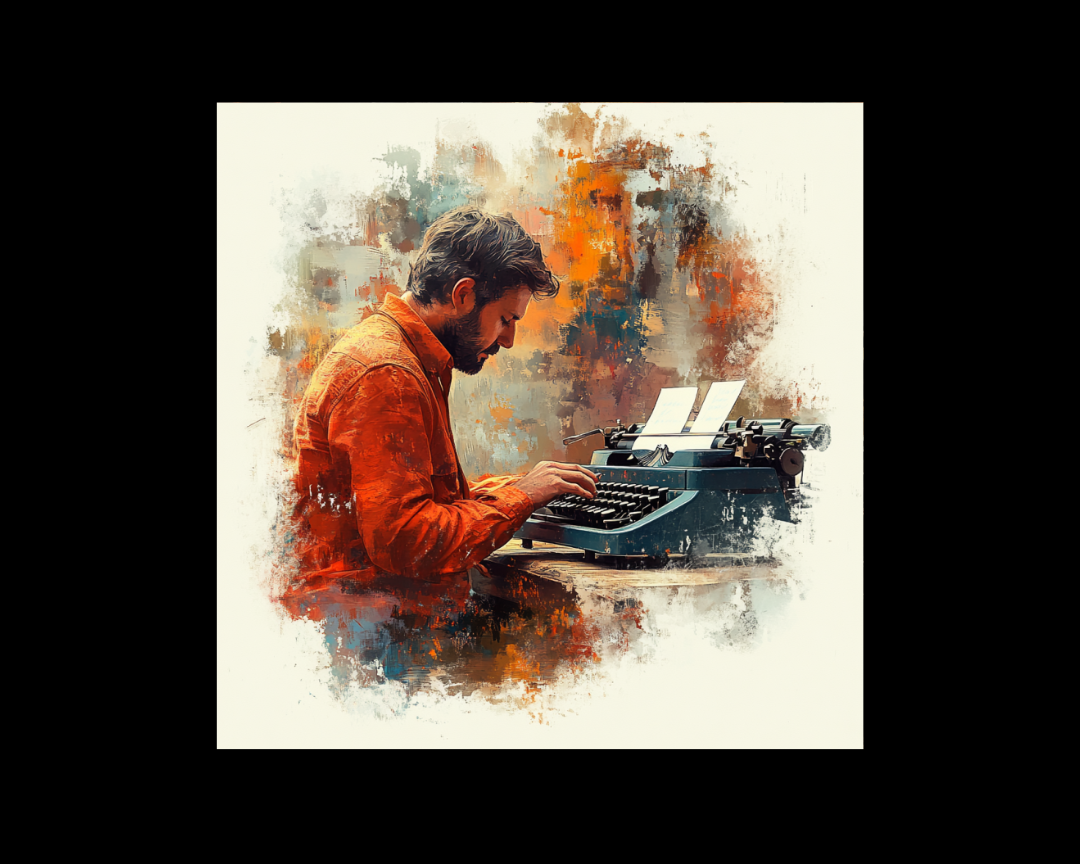The Three Most Important People in Your Story
In today's blog post, we're diving deep into the insights shared in a captivating video titled "Story Development: The Three Most Important People in...

The opening lines of your autobiography hold more weight than perhaps any other sentences you'll write. They're your handshake with readers, your first impression, your invitation into the world of your experiences. Unlike fiction, where you can rely on invented drama, autobiography demands that you find the inherent compelling elements within your own life story and present them with such skill that strangers become invested in your journey.
Consider this: readers scanning your book have countless other options competing for their attention. Your opening paragraphs must answer the unspoken question every reader brings to any book: "Why should I care?" The answer lies not just in what happened to you, but in how you choose to tell it. We'll explore the most effective techniques for launching your life story in ways that create immediate connection and sustained engagement.
One of the most common mistakes in autobiography is starting with extensive background information—birth details, family history, or childhood environment—before giving readers a reason to care. Instead, professional writers know to drop readers directly into a compelling moment that immediately establishes stakes and draws them forward.
Consider starting with a moment of crisis, decision, or revelation rather than chronological beginnings. The key is identifying scenes from your life that contain inherent drama or emotional weight. This might be the moment you realized your marriage was over, the phone call that changed everything, or the split-second decision that altered your life's trajectory.
The technique works because it mirrors how we naturally tell compelling stories in conversation. We don't begin with "I was born on Tuesday, March 15th, 1975, in Springfield General Hospital." We start with "You'll never believe what happened to me yesterday" and dive straight into the action. Your autobiography should feel like you're sharing the most interesting stories of your life with a close friend.
Opening with a question—either directly posed to readers or implied through your narrative—creates immediate engagement by sparking curiosity. The human brain is wired to seek answers, so presenting an intriguing question compels readers to continue searching for resolution.
These questions can take several forms. You might open with philosophical reflection: pondering what leads people to make life-altering choices, or examining how childhood experiences shape adult decisions. Alternatively, you could pose specific mysteries from your own experience: puzzling family secrets, unexplained events, or decisions that seemed inexplicable even to you.
The most effective opening questions aren't simply rhetorical devices—they should genuinely reflect the central themes or mysteries that drive your entire autobiography. If your book explores how you overcame adversity, your opening question might examine what gives some people resilience while others crumble under pressure. This approach immediately signals to readers that your autobiography will offer insights beyond mere personal history.
Placing readers directly into a specific, well-detailed scene can create immediate immersion and emotional connection. Rather than broadly describing your childhood home, for instance, focus on one particular moment in one specific room that encapsulates something significant about your experience.
Effective scene-setting in autobiography uses all the senses. Don't just describe what you saw—include sounds, smells, textures, and tastes that will help readers feel present in your memory. The goal isn't photographic accuracy but emotional authenticity. Choose details that serve the story and reflect the mood or theme you want to establish.
Remember that scene-setting should serve narrative purpose, not just provide atmosphere. Each detail should either advance your story, reveal character, or reinforce themes. If you're opening with a childhood scene, ask yourself what that specific moment reveals about the person you would become or the challenges that would shape your life.
Sometimes the most effective opening is a statement so unexpected or dramatic that readers cannot help but continue reading to understand the context. This technique requires careful handling—the shock value must be genuine to your story, not manufactured for effect.
Shocking openings work best when they reveal something fundamental about your character or experience while raising questions that can only be answered by reading further. The statement should be true, significant to your story, and intriguing enough to overcome any initial reader skepticism.
However, avoid shock for its own sake. The dramatic opening must connect meaningfully to the larger themes of your autobiography. If your book ultimately explores themes of resilience and growth, an opening that highlights your lowest moment can create powerful contrast with the person you eventually became.
Opening with dialogue—either conversation with others or internal dialogue with yourself—immediately establishes your narrative voice while creating a sense of immediacy. Readers hear how you speak, how you think, and how you interact with the world around you.
This technique works particularly well for autobiographies that focus on relationships or social interactions. Beginning with a significant conversation can reveal personality, establish relationships, and hint at conflicts or themes that will develop throughout your book.
When using dialogue openings, ensure the conversation reveals something significant about you or your story. Avoid mundane exchanges that don't advance narrative or character development. The dialogue should feel natural while serving the larger purpose of drawing readers into your experience.
Many powerful autobiographies begin with moments of sudden understanding—the instant when you recognized a truth about yourself, your family, or your world that changed everything. These realization moments create natural narrative tension because they suggest transformation to come.
This approach works well because it mirrors how we often understand our own lives—through moments of clarity that illuminate patterns we hadn't previously recognized. Beginning with such a moment immediately suggests that your autobiography will offer insights and growth rather than simple chronological recounting.
The realization doesn't have to be profound or life-changing to be effective as an opening. Sometimes small moments of understanding—recognizing a parent's flaws, understanding your own motivations, or seeing familiar situations from new perspectives—can create compelling entry points into larger stories.
Several opening approaches consistently fail to engage readers and should generally be avoided. Beginning with birth details, family genealogy, or extensive background information typically loses readers before they become invested in your story. These elements can be important to your narrative but work better once readers already care about your journey.
Similarly, avoid opening with vague philosophical statements or abstract reflections that don't connect to specific experiences. While autobiography often includes meaningful insights, these work best when grounded in concrete moments and specific details from your life.
Resist the temptation to apologize for telling your story or to hedge with phrases like "I'm not sure why anyone would be interested in my life, but..." Confidence in your narrative voice is essential from the first sentence. If you don't believe your story deserves telling, readers won't either.
Before writing your opening, identify the central themes, conflicts, or transformations that define your autobiography. Your opening should connect to these larger patterns while providing immediate engagement. Consider what aspect of your experience might resonate most powerfully with readers, then find specific moments that embody those themes.
Write multiple versions of your opening using different techniques. Try starting with action, then with dialogue, then with a moment of realization. Compare how each approach serves your story and connects to your broader themes. The best opening for your autobiography will depend on your unique story and the voice you want to establish.
Remember that your opening sets expectations for the entire book. If you begin with humor, readers will expect wit throughout. If you start with drama, they'll anticipate emotional intensity. Ensure your opening accurately represents the tone and style that will characterize your full autobiography.
SEO Title: Master Autobiography Openings: Hook Readers from Page One
The opening of your autobiography is your opportunity to transform casual browsers into committed readers. By choosing techniques that highlight the most compelling aspects of your experience while establishing clear narrative voice and direction, you create the foundation for a memoir that readers will finish and remember.
Every life contains stories worth telling, but not every life story begins in a way that compels reading. The difference lies not in the drama of your experiences but in your skill at identifying and presenting the moments that reveal universal truths through personal experience. Your autobiography should feel like the best kind of conversation—one where someone with fascinating experiences and hard-won wisdom shares insights that illuminate both their life and your own.
The techniques we've explored give you tools for creating that kind of connection from your very first sentence. Choose the approach that best serves your story, trust in the value of your experiences, and give readers the compelling opening they need to invest in your journey.
Ready to craft an autobiography opening that captures readers from the first page? Hire a Writer's memoir specialists understand the delicate balance between personal revelation and narrative craft. Our experienced team can help you identify the most compelling entry points into your life story and develop opening techniques that create immediate reader engagement. Whether you're struggling to begin your autobiography or looking to strengthen an existing opening, we'll help you transform your experiences into prose that commands attention and respect. Contact us to discover how professional guidance can turn your life story into the kind of autobiography readers can't put down.
.png)
In today's blog post, we're diving deep into the insights shared in a captivating video titled "Story Development: The Three Most Important People in...

Narrative nonfiction is a genre of writing that uses the techniques of fiction—such as character development, storytelling, and scene-setting—while...
%20(1).png)
Stories have the power to transcend boundaries, allowing us to immerse ourselves in the lives of characters from different worlds. One captivating...